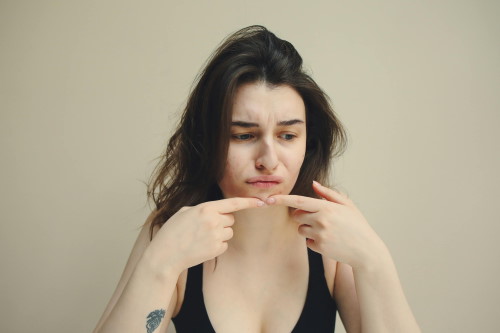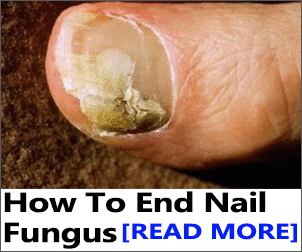As you age, you might think you're past the age of getting teenage acne.
Although hormonal changes during puberty is a common cause of acne — about 80 percent of preteens and teens experience it — that isn't the only thing that can cause pimples.
The truth is, up to 15 percent of adult women have acne, according to the American Academy of Dermatology (AAD).
“What's interesting is that you can get it [as an adult] even if you didn't have it as a teenager,” says Francesca Fusco, MD, an assistant clinical professor of dermatology at Mount Sinai Medical Center in New York City.
BREAKING: Revolutionary Skin Serum That's Taking The Nation by Storm
Although the pimples look the same, grownup breakouts are different from the kind you had in high school. “Adult acne is usually on the lower half of the face; teen acne is typically on the upper half,” Dr. Fusco says. “Adult acne is also deeper and appears as cysts, or ‘under the skin’ pimples, which can't be drained.”
Teen acne usually sits on the skin's surface, she says. Causes of your current breakouts can include changing hormone levels from premenstrual dips, fluctuations that occur during perimenopause, cosmetics, skin-care regimen, and other lifestyle choices.
Read on to learn about 10 surprising causes of your adult acne and how to zap those zits away.
1. Hairstyling Products That Touch Your Skin Can Contribute to Acne
Breakouts caused by hair-care products are so common that they have a name: pomade acne.
“Styling products seep oil onto the forehead, which can trap acne-causing bacteria in your pores,” says Richard Fried, MD, PhD, the director of Yardley Dermatology Associates in Morrisville, Pennsylvania, and the author of Healing Adult Acne.
Clogged pores become inflamed, resulting in redness, pus, and ultimately blackheads and whiteheads along the hairline and forehead.
Your hairstyle matters too: Bangs make acne worse by bringing skin-clogging hair products right against your forehead.
“Many times, what you’re using on your hair winds up on your face, especially if you use products with spray applicators,” Dr. Fried says.
Apply products with your hands and keep them away from your hairline. After applying, wipe your skin with facial cleanser to remove any stray styling product.
2. Facial Hair Removal Can Lead to Acne in an Unexpected Way
Yuri Arcurs/GettyImages
Here, you’re trading one complexion problem — facial hair — for another: bumpy skin.
Topical products applied to your skin before or after hair removal can be comedogenic (meaning they clog pores and promote acne), says Fusco.
Keep in mind that itchy bumps after hair removal might not be true acne, but rather “an irritation of the hair follicle that causes a transient rash,” she says.
Relieve the rash by applying a warm compress to your face three to four times a day. If this doesn’t work, see your doctor. You may need an antibiotic to clear the rash.
To reduce bacteria on your skin, clean hairy areas before defuzzing and use noncomedogenic products that won’t clog your pores.
3. Using Too Many Skin-Care Products Can Aggravate Skin, Causing Acne
You might experiment with several new skin-care products a year. That’s good for the cosmetics industry but bad for your skin.
Switching products or adding a new one before giving it a chance to work “challenges your skin with new preservatives and active ingredients, which can be irritating and cause breakouts,” says Paul Jarrod Frank, MD, a dermatologist and the founder of PFRANKMD Skincare in New York City.
Even anti-acne products can cause blemishes if you use too many.
“I have patients who have acne because they switch between four or five different acne creams or use an astringent, facial wash, and spot cream, all with acne-fighting ingredients,” Dr. Frank says. “This tears their skin apart.”
Whether your goal is fighting wrinkles or zapping zits, pick one or two products and give them at least four to six weeks to work.
“It takes that long for skin to turn over, so you really have to give it that adjustment time,” Frank explains.
Need another reason to stop dabbling with acne “cures”? You’ll save money at the drugstore and free up space in your medicine cabinet.
4. Your Makeup Remover (or Lack Thereof) May Trigger Acne
Pore-clogging cosmetics can combine with your natural skin oil to cause breakouts called acne cosmetica.
The problem isn’t only the products, but also how you remove the makeup, Frank warns.
“Either women clean their skin in a cursory manner, or because they’re wearing mineral makeup they think they don’t need to wash their face thoroughly,” he adds.
After a long day, makeup, oil, and dirt build up. This is a triple threat that can easily clog your pores, trapping acne-causing bacteria and triggering breakouts.
Look for noncomedogenic products, and wash your face thoroughly — and gently — every night. Gently apply makeup, clean your makeup brushes every week, and don’t share cosmetic products.
5. Traveling Can Wreak Havoc on Your Skin, Contributing to Breakouts
Ever wonder why your skin looks like the moon's surface after a vacation?
The change of environment — the sun, heat, and humidity — can trigger acne.
“Your skin’s not used to those things, so it’s being challenged and reacts by breaking out,” Frank says.
You can’t change the weather or humidity of where you visit, but avoiding too much sun exposure and using a sunscreen with zinc oxide or titanium dioxide might help reduce breakouts.
And because your skin is adapting to environmental changes, don’t pile on epidermal stress with new products.
6. Heavier Sunscreens May Promote Breakouts
Sunscreen is a must-have if you have acne-prone skin, but which sunscreen is right for you?
“People with acne or acne-prone skin should look for oil-free, noncomedogenic sunscreens,” says Yoram Harth, MD, a dermatologist and the chief medical officer of MDacne in San Francisco. “Heavier” sunscreens that aren’t labeled as oil-free can clog the skin pores and cause more acne, he says.
Acne Sunscreen
It’s important to shield your skin from the sun, including if you have acne. Here’s the best type of sunscreen for acne-prone skin, according to a dermatologist.
Sunscreens have two types of active ingredients. Chemical agents that absorb into the skin and protect against harmful ultraviolet rays, and physical agents (also called mineral sunscreens) that sit on the surface to create a sun shield.
Physical sunscreens are often recommended for sensitive skin because they deflect the sun’s rays.
But these sunscreens can be thicker, leaving a white cast on the skin and possibly clogging pores, whereas chemical sunscreens are invisible, very light, and leave the skin shine-free, explains Dr. Harth.
If you develop acne after using a physical sunscreen, you may need a product that isn’t as thick. Switch to a sunscreen with chemical ingredients like avobenzone, oxybenzone, methoxycinnamate, or octocrylene.
And don’t forget to wash your sunscreen off your skin after a day in the sun. Even the most sheer, lightweight sunscreens can clog pores if left on overnight.
7. A Diet High in Processed Food and Refined Carbs May Lead to Acne
As teens, we believed that greasy grub and chocolate cake caused our pimples. And that might hold true for you now that you’re an adult.
“The latest scientific evidence suggests that high-carbohydrate diets may predispose you to acne,” Fusco says. Specifically, diets high in refined carbohydrates (“white” foods including white bread and white pasta, along with crackers, cake, and cookies) that are high on the glycemic index may increase the development and severity of breakouts, yet more research is needed.
The glycemic index is a scale that gauges how much a certain food can affect blood sugar levels.
There may also be a link between acne and dairy, according to Harth.
“Dairy products have been shown in multiple studies to increase levels of insulin-like growth factor 1 (IGF-1), that can trigger or worsen acne breakouts,” says Harth. “One of the most triggering forms of dairy is cow’s milk, especially low-fat milk, which contains a large amount of progesterone-like hormones and has a higher sugar content” than full-fat milk.
Cut back on snacks like chips and ice cream and switch to whole grains, veggies, fruits, and high-protein foods.
8. Stress Is Accompanied by Hormonal Changes That Increase Your Risk for Acne
Are you worrying about that deadline for a big project? Relationship troubles keeping you up at night? While stress alone can’t spark breakouts, it can exacerbate them.
“Stress can worsen acne by leading to a release of inflammatory chemicals called neuropeptides and hormonal changes,” Fried says.
Even “good” stress, like getting ready for a big event, might trigger breakouts. That’s why a huge pimple pops up on your wedding day or before a big date.
Use acne products with ingredients like salicylic acid and benzoyl peroxide to clear up stress-induced breakouts. To prevent future flareups, find a way to calm your nerves, whether it’s yoga, deep-breathing, or watching a chick flick.
9. Cell Phones Can Transfer Acne-Causing Bacteria to Your Face
All that on-the-go chatting is great — keeping you in touch with friends, family, and the office. But for your complexion? Not so much.
“Throughout the day, you expose your cell phone to surfaces with bacteria on them, and when you talk on the phone, you put this bacteria close to your mouth,” Fusco says.
Plus, if you’re constantly on your cell phone (or regular phone, for that matter), rubbing it against your face can lead to “acne mechanica,” which is pimples caused by friction.
TRENDING: New Formula Visibly Firms Skin And Hydrates Better Than an Expensive Cream
That bacteria transfer can also happen when you touch your face after texting on your cell phone.
Give your phone a rest every once in a while, and clean it with an alcohol wipe daily.
10. Dry Skin, Like Oily Skin, Is Also a Possible Culprit for Breakouts of Acne
It’s true that oily skin is the cause of bad breakouts, but so is the other extreme. “Dry skin can have microscopic cracks and fissures in which bacteria can multiply and cause acne,” Fusco says. Plus, dry skin flakes can clog pores.
Gently exfoliate your skin a few times a week and hydrate with a noncomedogenic moisturizer intended for dry skin.
The Takeaway
Even though it’s possible to get acne well into your twenties, thirties, forties, and beyond, pesky pimples don’t have to take over your face.
Take note of when pimples occur to help you identify a pattern. Recognizing the underlying causes of your adult acne is the first step to getting blemishes under control.








